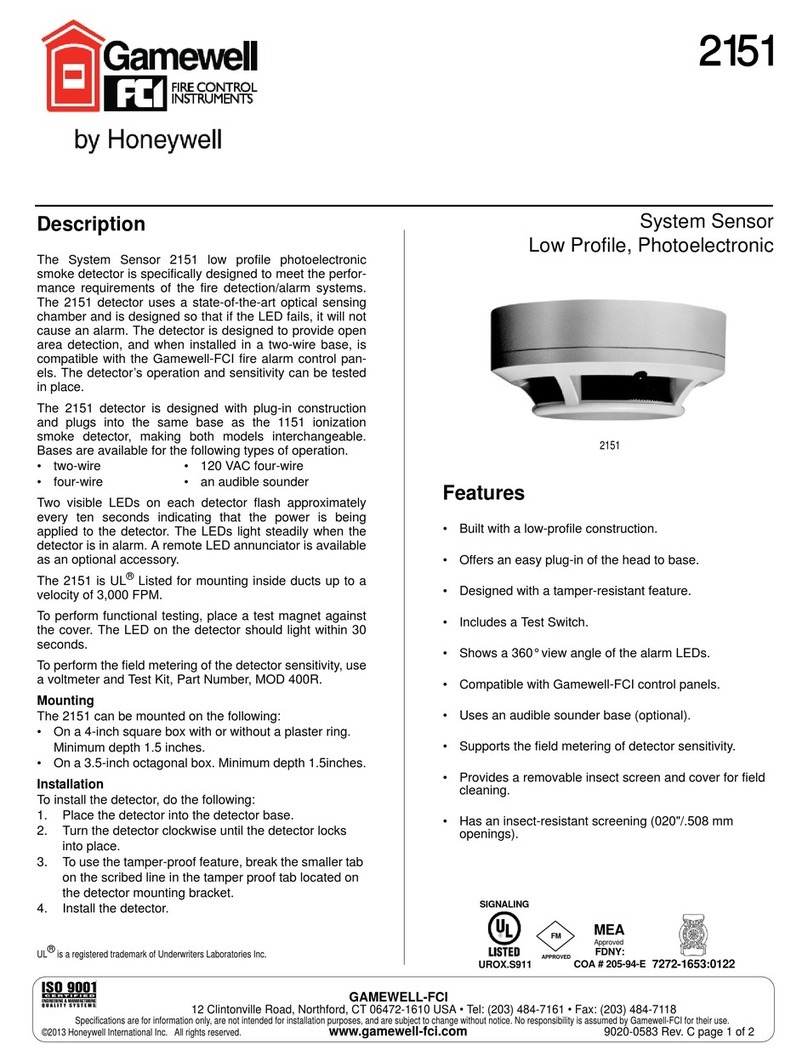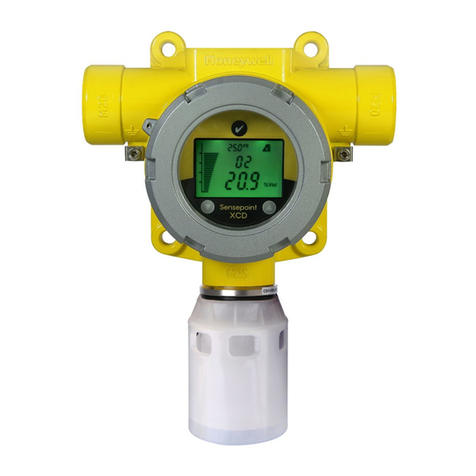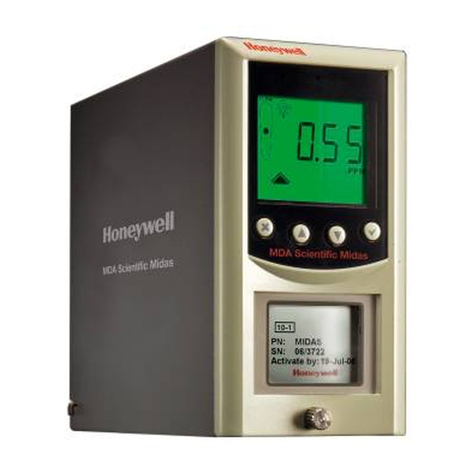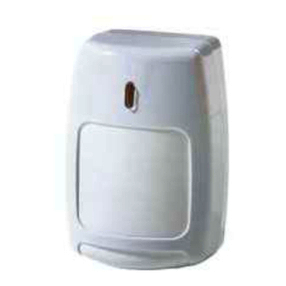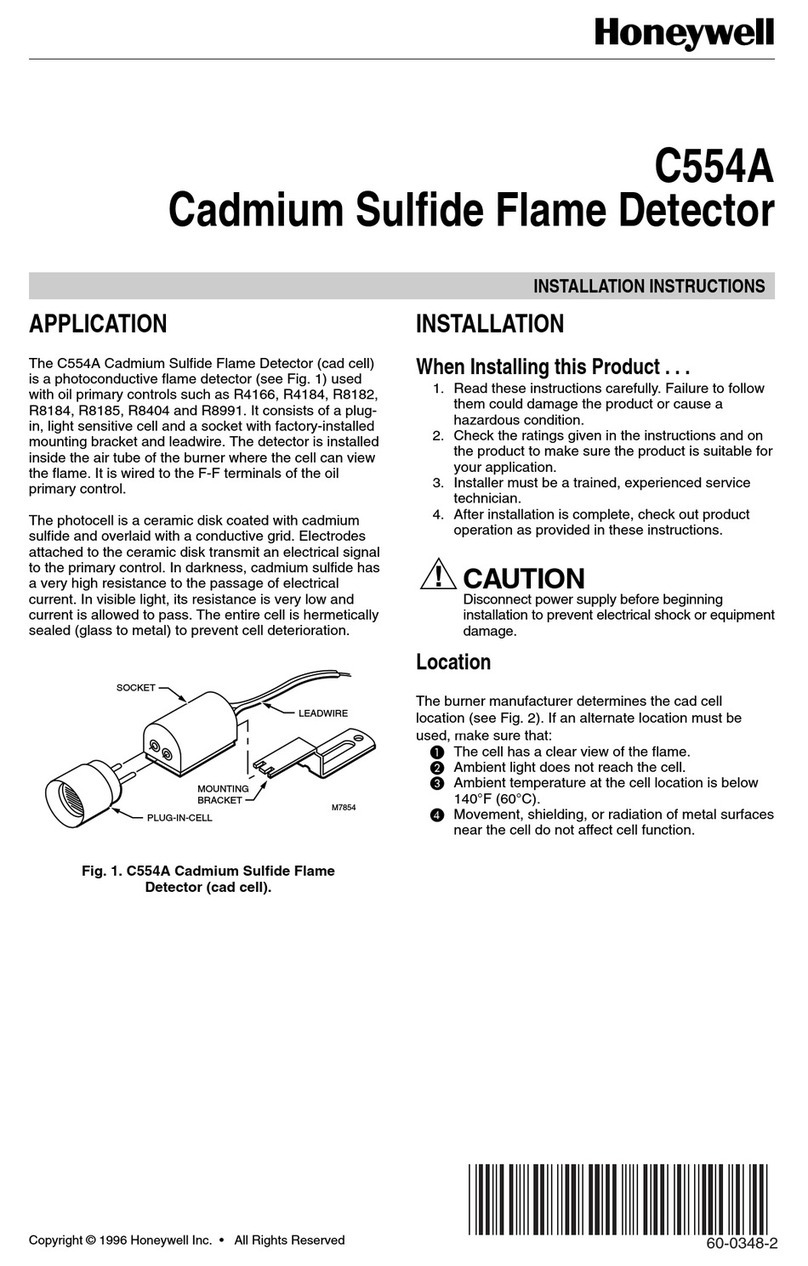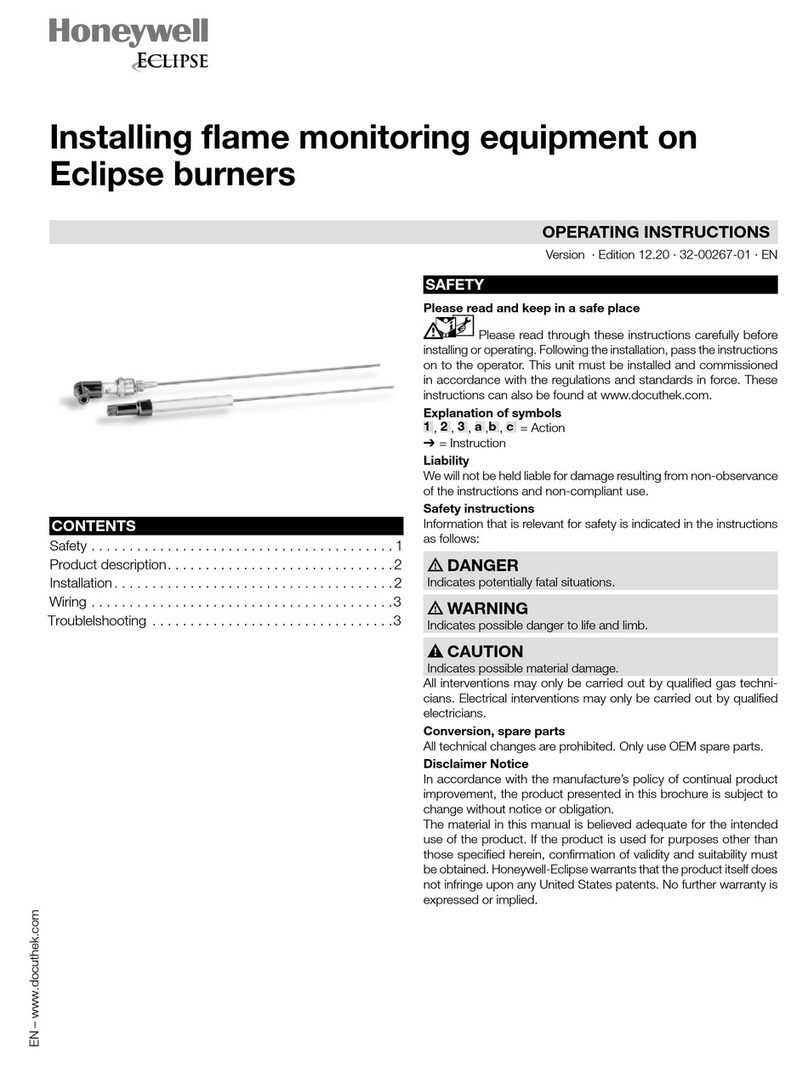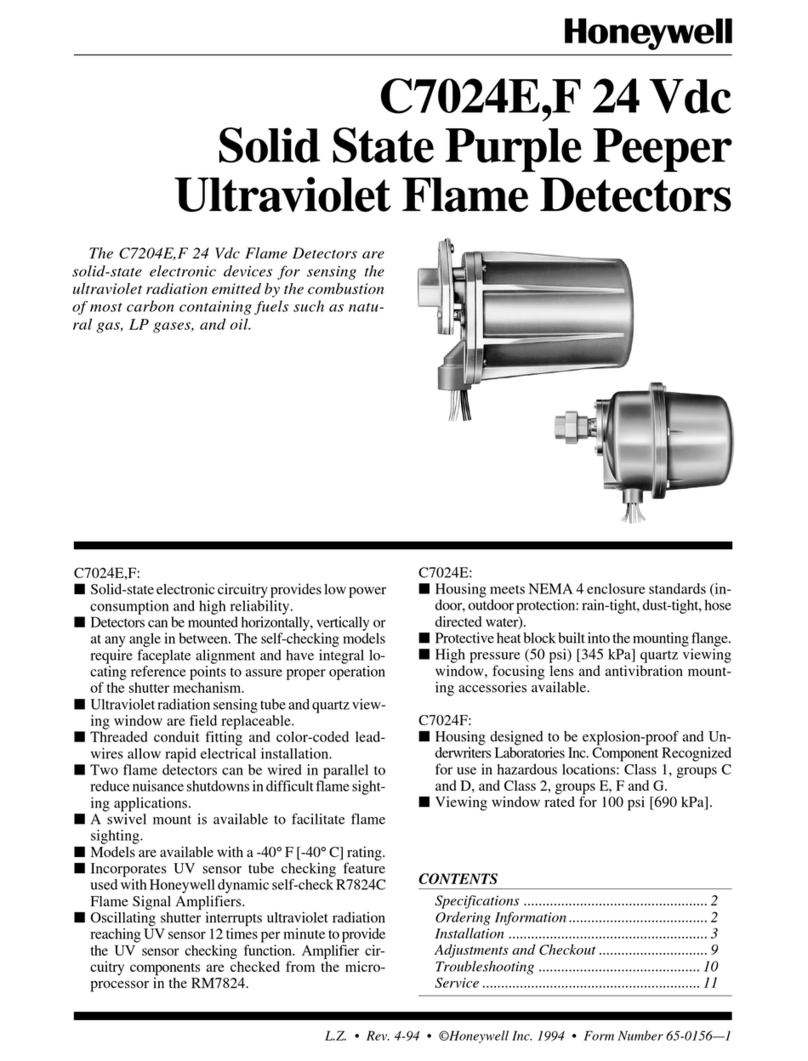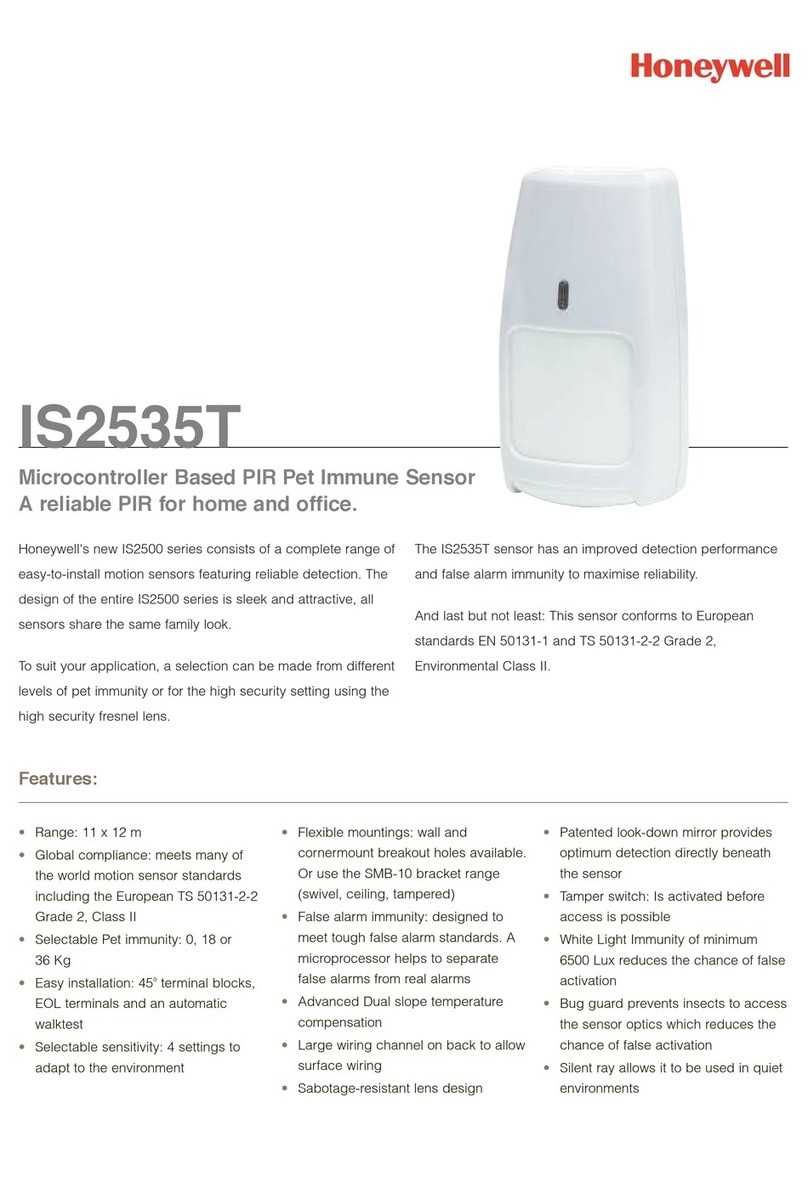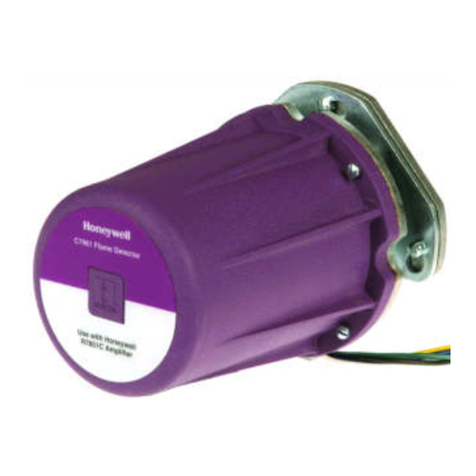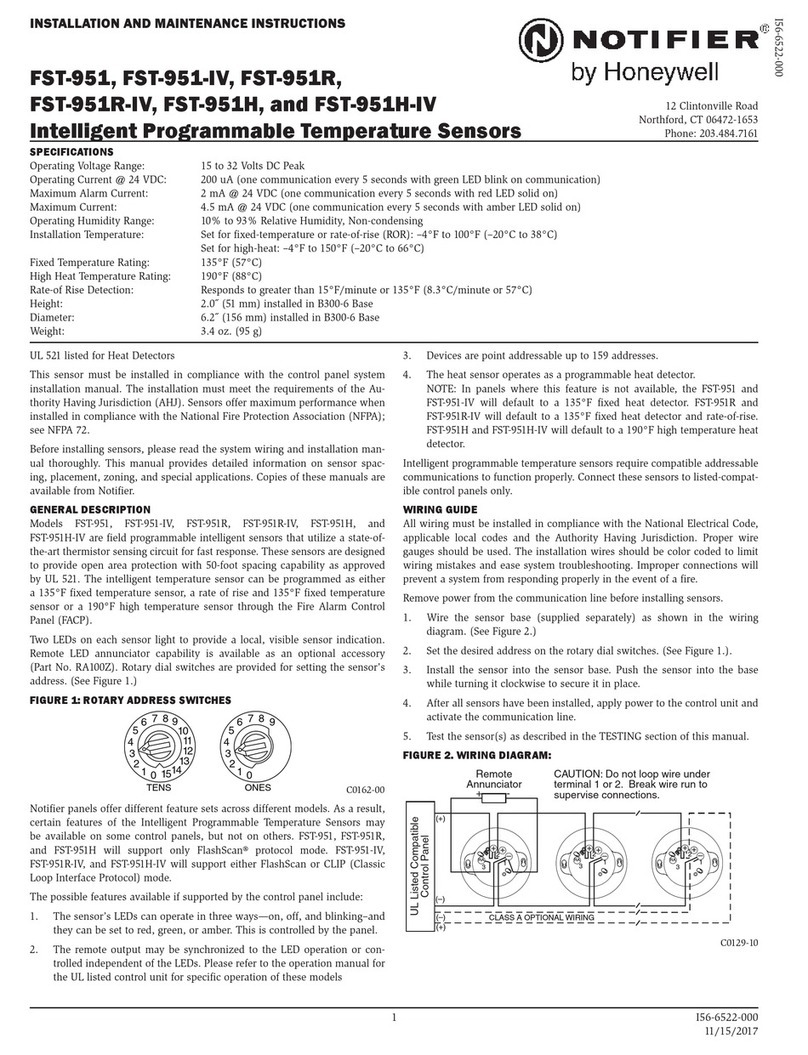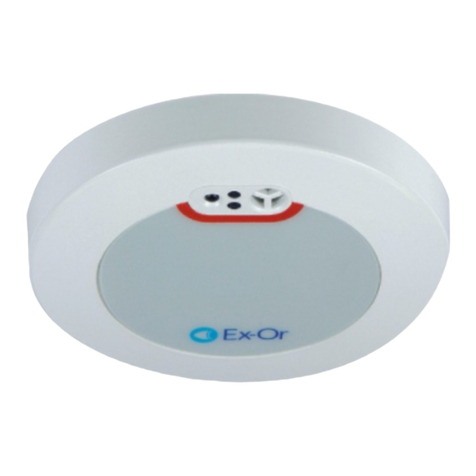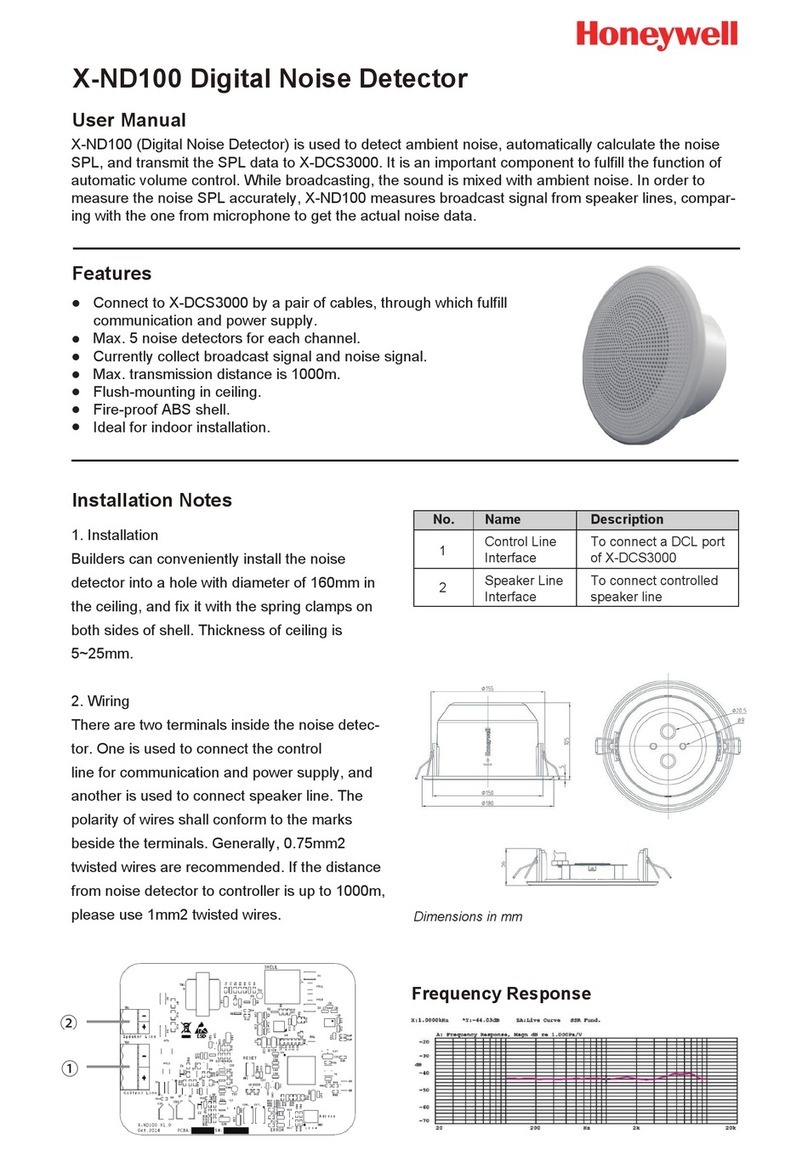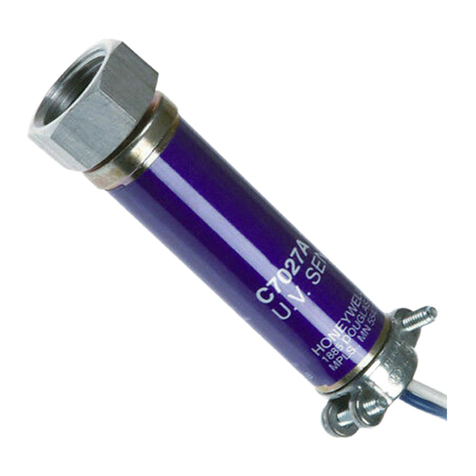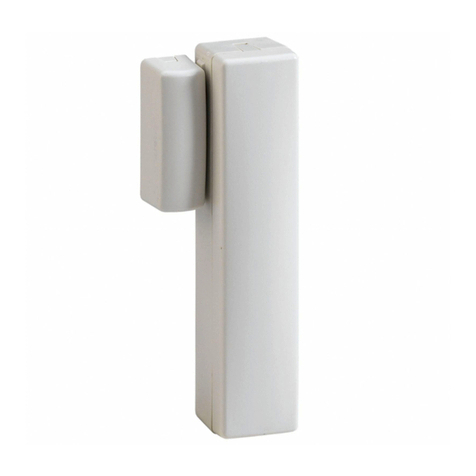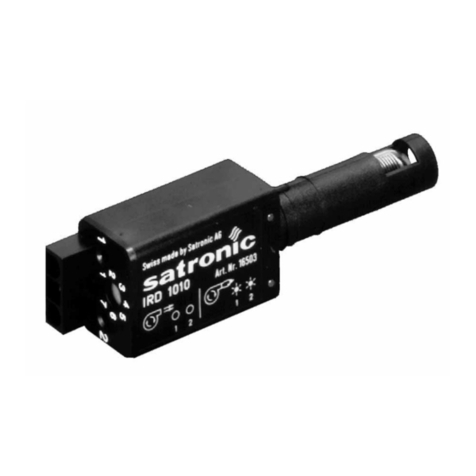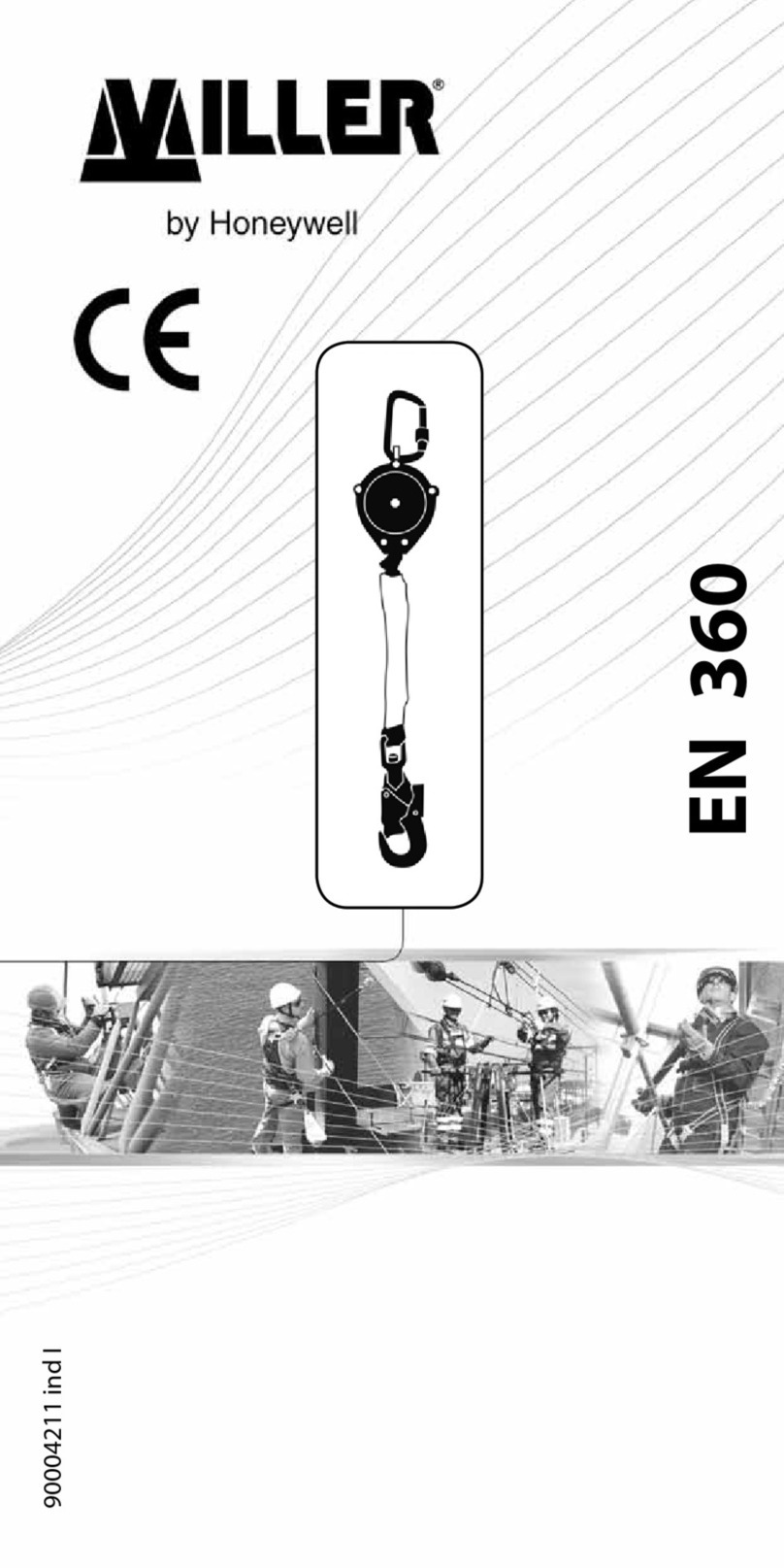
SETTING UP THE DETECTOR
PIR SENSITIVITY ADJUSTMENT
SWITCH 3 OF DIP-4 SWITCH FOR SETTINGS
“PULSE” - provides sensitivity control of PIR
according to the environment.
Position Left – “On” – High sensitivity
For stable environments.
Position Right – “OFF” – Low sensitivity
For harsh environments.
POTENTIOMETER RV1 “PIR” –
adjustment according to protected area
range.
For high-risk locations, the sensitivity should be
adjusted close to MIN (9%). In low risk situations,
the sensitivity should be adjusted closer to MAX
(100%) factory set to 54%.
Always walk test and re-adjust if required.
LED INDICATION OF ALARM SIGNAL
SWITCH 1 OF DIP-4 SWITCH FOR SETTINGS
“LED” – provide control of Alarm signal LED
indication.
Position Left – “On” – LED enable.
Position Right – “OFF” – LED disable.
SOUND SENSITIVITY ADJUSTMENT
SWITCH 2 OF DIP-4 SWITCH FOR SETTINGS
“AUDIO” – provide control of sound detection
sensitivity.
Position Left – “On” – reducing the sensitivity of
sound detection by 50%. (Use in small room)
Position Right – “OFF” – LED disable.
PET IMMUNITY SETTING
SWITCH 4 OF DIP-4 SWITCH FOR SETTINGS
“PET” 15kg – 25kg
Position Left “ON” Immunity to PET up to 15 kg
Position Right “OFF” Immunity to PET up to 25 kg
TEST PROCEDURES.
Wait for one minute warm up
time after applying
12-Vdc power. Conduct testing with the protected
area cleared of all people
.
Make sure to test the
unit thoroughly for proper detection.
Walk test
1. Remove front cover.
Set “PULSE” to “ON” position, and set “LED” to
“ON” position.
2. Replace the front cover.
3. Start walking slowly across the detection area.
4. Observe that the red led lights whenever
motion is detected.
5. Allow 5 sec. between each test for the detector
to stabilize.
6. After the walk test is completed, you can set
the “LED” to “OFF” position.
NOTE:
Walk tests should be conducted, at least once a
year, to confirm proper operation and coverage of the
detector.
ADJUSTMENT
SHOCK / GLASS ADJUSTMENT
Use only during testing and setting
GLASS BREAK ADJUSTMENT
To adjust the glass break sensitivity, place the
jumper below the GLASS marking. Green
(SHOCK) LED is constantly ON.
Now you can adjust the sensitivity by rotating the
GLASS potentiometer.
Operate the Sound Break Simulator* near the
protected window and rotate the potentiometer
GLASS clock-wise to increase sensitivity, and
counter-clock-wise to decrease sensitivity until
the Yellow and Red LEDs are illuminating for
each glass break sound.
Note:
When the jumper is set for GLASS adjustment,
only the high frequency sound of breaking glass is
detected.
*It is recommended to use GLASS-BREAK
Simulator FG-701 (CROW p/n 004001)
SHOCK ADJUSTMENT
To adjust the shock setting (increase/decrease
sensitivity) place the jumper below the SHOCK -
Yellow (GLASS) LED is constantly ON.
Now you can adjust the sensitivity by rotating the
potentiometer SHOCK.
Hit gently on the protected glass and rotate the
potentiometer clock-wise to increase sensitivity,
and counter-clock-wise to decrease sensitivity
until the Green and Red LEDs are illuminating for
each hit.
Note:
When the jumper is set for SHOCK adjustment,
only the low frequency of the shock signal prior to
glass breakage is detected.
SHOCK/GLASS TEST PROCEDURE WALL AND CEILING INSTALLATION OPTIONS
BRACKET INSTALLATION
FINAL TESTING
•Make sure to set jumper “GLASS/SHOCK” in
position OFF. When the jumper is in this
position, the detector will detect both shock
and sound frequencies.
•
••
•To ensure maximum protection against false
alarms, activate any device in the area, which
might automatically cycle pumps, generators,
heating/air conditioning units, etc. If the
cycling
devices trigger an alarm, mount the
unit in a different location.
TECHNICAL SPECIFICATION
Detection Method Quad (Four element) PIR & electret microphone
Detection Speed 0.15 – 3.6 m/sec
Power Input 7.8 - 16 Vdc
Current Draw Alarm PIR :16.5mA; Alarm Shock & Glass 22mA; Alarm all: 18mA
Standby: 16.5 mA
BI Directional Temperature Comp. YES
Pulse Count 1, AUTO
Alarm Period 2 sec
Alarm Output N.C 28Vdc 0.1 A with 10 Ohm series protection resistors
Tamper Switch N.C 28Vdc 0.1A with 10 Ohm series protection resistor – open
when cover is removed
Warm Up Period 60 sec
Operating Temperature -20
°
C to +50
°
C
RFI Protection 30V/m 10 - 1000MHz
EMI Protection 50,000V of electrical interference from lighting
Visible Light Protection stable against halogen light 2.4m (8ft )or reflected light
Detection range Glass up to 10m ( 90
°
); PIR up to 15m (WA lens)
LEDs indicator Yellow LED (GLASS) - glass break signal for testing & adjustment
Green LED (SHOCK) - shock signal for testing & adjustment
Red LED (ALARM) - alarm signal:
Fleshing light - glass & break detection or glass & shock & PIR
detection
Constant light - PIR detection
Dimensions 121mm x 60mm x 37mm
Weight (inc. battery) 110 gr.
For Technical Support, please
call 01268 563 247.
35493AE50
SHOCK - for adjustment
of the low frequency
sensitivity with
potentiometer “SHOCK”
GLASS - for
adjustment of the
high frequency
sensitivity with
potentiometer
GLASS
OFF - for regular
operation
